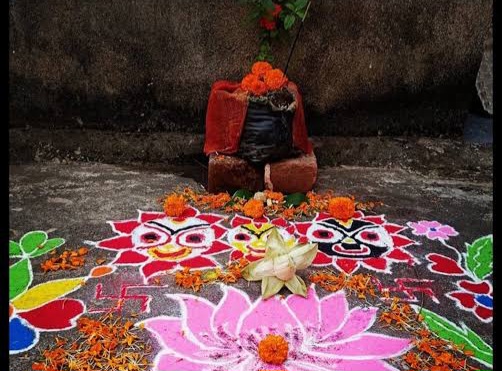Cuttack: The concluding five days of the sacred month of Kartika in Odisha are observed as Panchuka. Commencing with Bada Ekadashi and concluding on Kartika Purnima, devotees of Lord Jagannath engage in a period of fasting.
The last five days of the month of Kartika, i.e. from Deva Uthapana or Bada Ekadashi to the full moon, are celebrated as holy days. It is also known as Mahapanchuk, Baka Panchuka or or Vishnu Panchuka.
Those who can’t afford to observe the whole month of Kartika, they do it for five days. Many also starts observing from Aaanla Nabami (the day of Radha Pada Darshan), which also culminates on Kartika Purnima. So few people celebrate for 7 days i.e. from Aaanla Nabami to Kartika Purnima.
In the Odia tradition, abstaining from non-vegetarian fare is observed throughout the entire month of Kartika. Those unable to adhere to this practice for the entire month abstain from non-vegetarian food specifically during the final five days, known as Panchuka or Bagарanchuka. Folklore suggests that even cranes adopt a virtuous stance during this period, refraining from consuming fish.
Panchuka Rituals entail the worship of Goddess Lakshmi and Lord Narayan over the five-day span. Married women also pay homage to Goddess Vrundavati, the spouse of the demon Jalandhara, through the veneration of the sacred tulsi plant, seeking longevity for their husbands. The belief is rooted in the notion that Vrundavati’s chastity and purity sustained the life of her husband, who did not adhere to any dharma. Consequently, women believe that by appeasing Vrundavati, they can ensue similar merit.
The Kartika Brata concludes on ‘Kartika Purnima,’ marking both the end of the Kartika month and the culmination of Panchuka.
During these five days, women and widows wake up before Sunrise and have bath. They make colourful rangolis using muruja around the Chaura. Further, they pray in front of the chaura.
As per the tradition, women use to organise Akashadeepa during the five days. It is a lighted deepa (earthen lamp) filled with ghee, placed inside an earthen pot and pulled atop an erect pole using a pulley and fastened. It is lighted near the chaura during the evening and burns throughout the night.



Comments are closed.